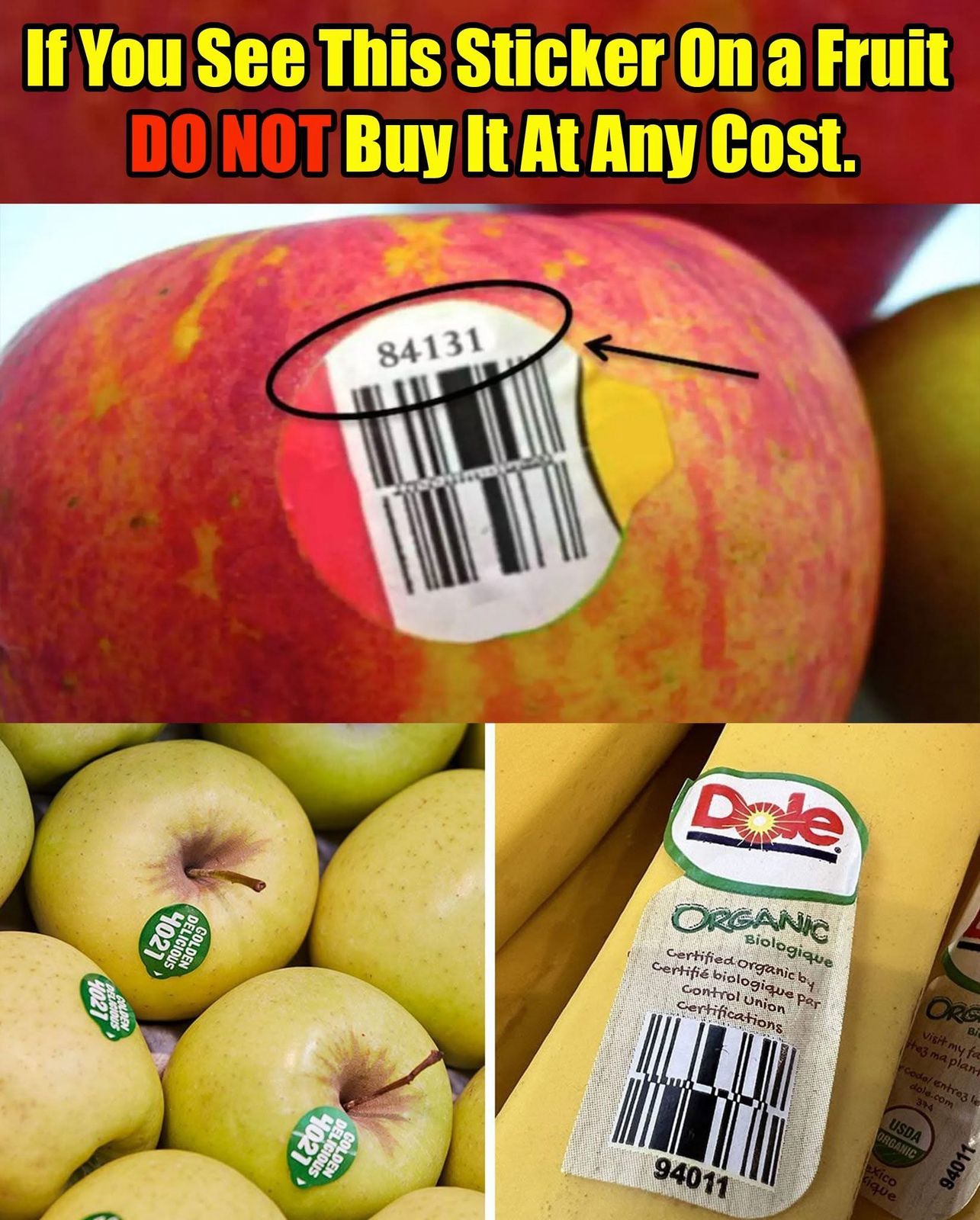Next time you’re at the grocery store picking up apples or bananas, take a moment to check out those little stickers on the fruit. Sure, they help the cashier scan your purchase, but did you know they also carry hidden information about how that fruit was grown? Those small numbers—usually four or five digits—can tell you whether the produce is organic, genetically modified, or conventionally grown. Once you know what to look for, you’ll be able to make more informed choices about the food you eat and the farming practices you support.

Cracking the Fruit Code: What the Numbers Mean
These numbers are called PLU codes, which stands for Price Look-Up. They were introduced in the early 1990s by the International Federation for Produce Standards (IFPS). The main goal was to make produce pricing more efficient, especially during checkout and inventory management. Today, more than 1,400 PLU codes exist, but not every store or farmer uses them. Despite that, they’ve become a widespread part of how we buy fresh fruits and vegetables.
Here’s the breakdown:
-
A 5-digit code starting with the number 9 means the fruit was organically grown. For example, a banana labeled with the code 94011 tells you it’s an organic banana. Organic farming avoids synthetic pesticides and fertilizers, instead using compost, crop rotation, and natural pest deterrents. These methods aim to promote soil health and biodiversity.
-
A 5-digit code beginning with 8 signals that the produce is genetically modified (GMO). For instance, 84011 would indicate a genetically engineered banana. However, these codes are rarely seen in stores today. Due to consumer pushback, strict labeling regulations, and limited GMO options in fresh produce, many suppliers avoid displaying them, even when applicable.
-
A 4-digit code starting with 3 or 4 indicates the item is conventionally grown. This means it was likely cultivated using synthetic fertilizers and pesticides. For example, 4011 on a banana shows it’s a conventionally farmed banana—probably what you see most often in stores.
Organic vs. Conventional: Is There Really a Difference?
Many people automatically assume that organic produce is healthier than conventionally grown fruits and vegetables. While it’s true that organic farming uses more natural and environmentally friendly methods, studies show that there’s little nutritional difference between the two in terms of vitamins and minerals. The real distinction lies in how the food is grown and the environmental impact of each method.
Organic produce often contains fewer pesticide residues and avoids the use of genetically modified organisms, which appeals to health-conscious consumers. On the flip side, conventional farming can be more efficient and produces higher yields—making food more affordable and accessible.
Ultimately, choosing between organic and conventional produce comes down to personal values. If you’re concerned about sustainability and pesticide use, organic might be the way to go. If cost and availability matter more to you, conventionally grown produce is still a healthy choice.
Why These Codes Matter to Shoppers
While many shoppers ignore the numbers on fruit stickers, understanding them gives you a behind-the-scenes look at where your food comes from. It empowers you to align your purchases with your personal preferences, whether you’re trying to avoid GMOs, support organic farmers, or stick to a budget.
These codes also come in handy when you’re using a self-checkout kiosk. Instead of guessing or having to search for an item on a screen, you can enter the PLU code and speed things up. That means fewer delays and smoother grocery trips.
Are These Codes Required?
Interestingly, using PLU codes is not mandatory. Some small farmers, especially those who sell at farmers markets or local co-ops, may not use them at all. That’s why it’s always good to ask questions or look for additional labeling like “certified organic” or “non-GMO verified” if you’re unsure about a product’s origin.
Major supermarket chains, however, almost always use PLU stickers because they simplify inventory tracking and checkout processes. When used consistently, they also help retailers maintain transparency in labeling.
Bottom Line: A Small Sticker With Big Information
The next time you grab a piece of fruit, take a second to glance at that little sticker. It might seem like a small detail, but it can tell you a lot about how that apple, banana, or orange made its way to your cart. Whether you’re aiming to eat clean, stay within a budget, or support eco-friendly farming, those tiny numbers can help guide your decisions in a big way.
Understanding PLU codes is a simple yet powerful tool in your food-buying toolkit. It’s one more way to stay informed, shop smarter, and take control of what ends up on your plate.





